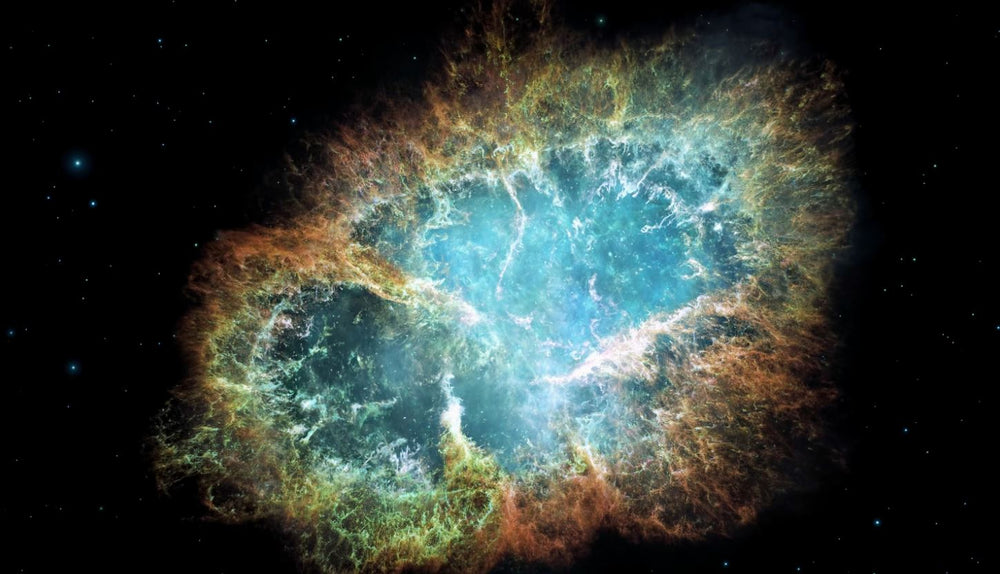What is a Supernova
In the vast expanse of the universe, stars exist in abundance. These celestial objects come in different sizes, ages, and colors, each with a unique story to tell. One of the most fascinating events that can happen to a star is a supernova, a catastrophic explosion that can outshine an entire galaxy. In this article, we will explore what a supernova is, how it occurs, and its different types.
What is a Supernova?
A supernova is a powerful explosion that occurs when a star has reached the end of its life. It is a violent event that can release an enormous amount of energy and radiation, resulting in the formation of new elements that are then dispersed into space. The explosion is so bright that it can sometimes outshine an entire galaxy for a short period, and it can also be seen from Earth.
How does a Supernova occur?
A supernova can occur in two ways, depending on the type of star. The first type is called a Type II supernova, which happens when a massive star (at least 8 times the mass of our sun) runs out of fuel and its core collapses. This collapse causes a massive shockwave that blasts the outer layers of the star into space. The second type is called a Type Ia supernova, which occurs when a white dwarf star (a small and dense star) accumulates enough mass from a companion star, causing a runaway fusion reaction that leads to an explosion.

Supernova Simple Definition
A supernova is a cataclysmic stellar explosion that occurs when a star reaches the end of its life cycle. This event results in a sudden, intense burst of energy and light, making the star briefly outshine an entire galaxy. Supernovae are crucial astronomical phenomena, contributing to the formation of elements and influencing the dynamics of galaxies.
What is a Supernova made out of
The core of a star undergoing a supernova is primarily composed of iron, with other heavier elements present as well. During the nuclear fusion processes that occur in a star's core throughout its life, lighter elements are fused into progressively heavier ones. Eventually, when a massive star exhausts its nuclear fuel, the core collapses under the force of gravity. This collapse leads to an incredibly dense region where temperatures and pressures are so extreme that heavier elements like iron are formed.
The explosion itself involves the ejection of the star's outer layers into space. These layers contain a mix of elements, including hydrogen, helium, and various heavier elements produced through nuclear fusion during the star's lifetime. The ejected material is propelled outward at tremendous speeds, carrying with it the newly synthesized elements formed in the intense heat and pressure of the supernova.
How Supernovas are formed
Supernovas are formed through the dramatic events that unfold during the evolution of certain types of stars. The process can be summarized in several key stages:
- Star's Life Cycle: A supernova is often associated with massive stars, those significantly larger than our Sun. Throughout their life cycle, these stars undergo nuclear fusion in their cores, converting lighter elements into heavier ones.
- Depletion of Nuclear Fuel: As the star exhausts its nuclear fuel, particularly the fusion of iron in its core, it loses the energy needed to counteract gravitational collapse.
- Core Collapse: The star's core collapses under its gravitational pull, leading to an extremely dense and hot region. This collapse happens rapidly, triggering a shockwave that moves outward through the star.
- Explosion: The shockwave causes the outer layers of the star to be expelled into space in a powerful explosion. This explosion releases an enormous amount of energy, making the star briefly shine as brightly as an entire galaxy.
- Element Synthesis: The intense conditions during the supernova allow for the formation of elements heavier than iron through rapid neutron capture processes. These newly synthesized elements are then scattered into space.
- Impact on Galaxies: Supernovae play a crucial role in the evolution of galaxies by enriching interstellar space with heavy elements. The ejected material contributes to the formation of new stars and planetary systems.
Types of Supernova:
There are two main types of supernovae: Type I and Type II. Type I supernovae are further classified into two subtypes: Type Ia and Type Ib/c. Type Ia supernovae occur in binary star systems, where one of the stars is a white dwarf. Type Ib/c supernovae occur in massive stars that have lost their outer layers of hydrogen.
Type II supernovae are classified into two subtypes: Type II-P and Type II-L. Type II-P supernovae have a plateau in their light curve, which means that the brightness of the supernova remains constant for a certain period before declining. Type II-L supernovae have a linear decline in their light curve, which means that their brightness decreases steadily over time.
Conclusion
Supernovae are one of the most fascinating events that occur in the universe. They mark the end of a star's life and the beginning of new elements and celestial bodies. Understanding the different types of supernovae and how they occur can help astronomers unravel the mysteries of the universe and its history. As technology and research continue to advance, we may be able to observe these cosmic explosions in even greater detail, providing us with more insight into the workings of our universe.
More Astronomy Topics:
- Astronomy Terms
- What is Polar Alignment?
- What is a Quasar?
- What is a Globular Cluster?
- What is a Solar Eclipse?
- What is a Lunar Eclipse?
- What is a Nebula?
- What is a Galaxy?
- What is a Pulsar?
- What is a Brown Dwarf?
- What is a Comet?
- What is a Planetary Nebula?
- What is a Cosmic Ray?
- What is a Gamma Ray Burst?
- What is a Meteor Shower?

